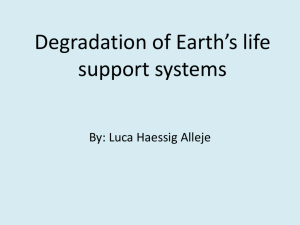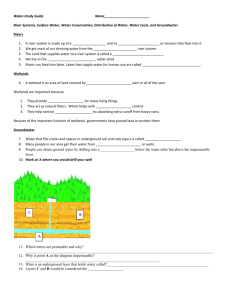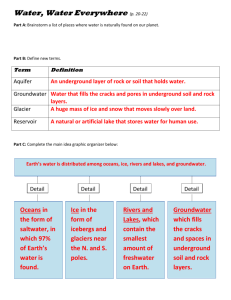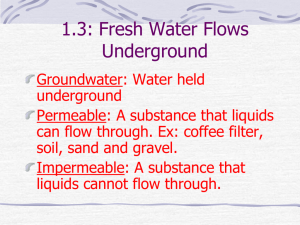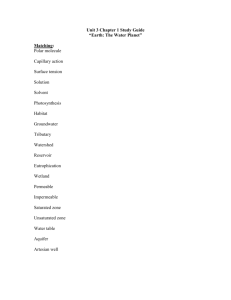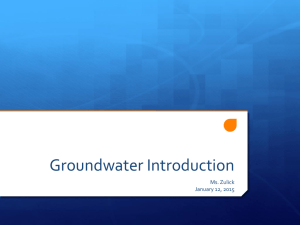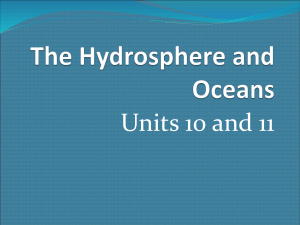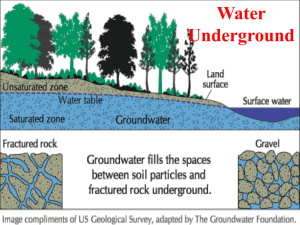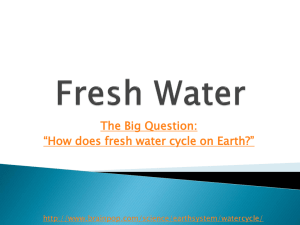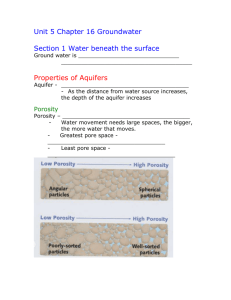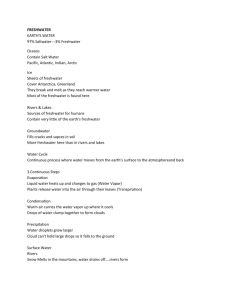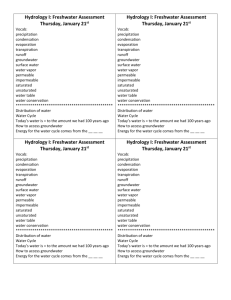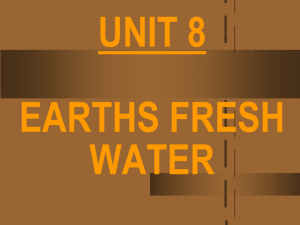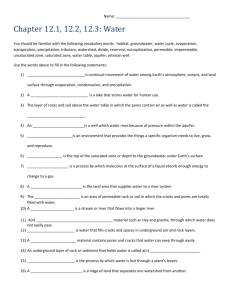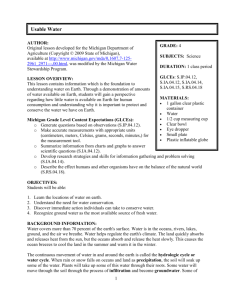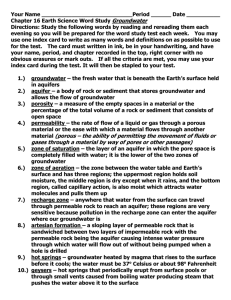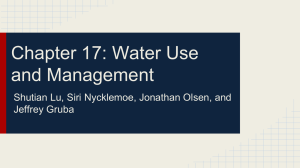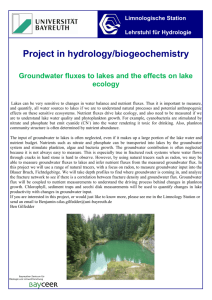Ch. 10 Cornell Notes
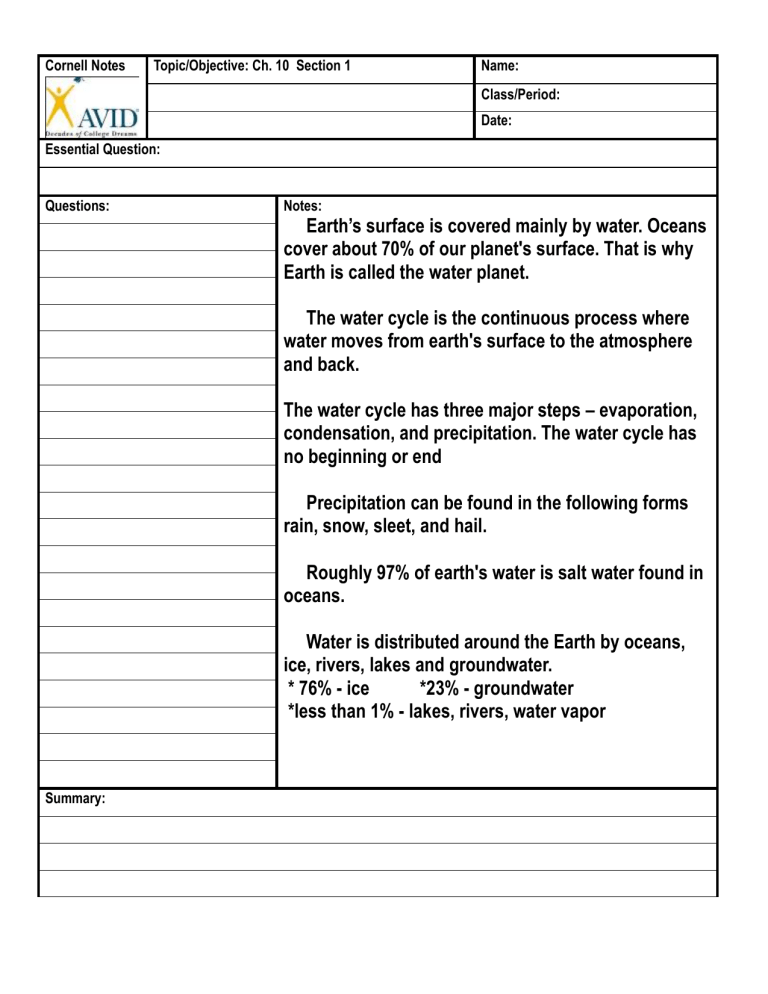
Cornell Notes Topic/Objective: Ch. 10 Section 1
Essential Question:
Questions:
Summary:
Name:
Class/Period:
Date:
Notes:
Earth’s surface is covered mainly by water. Oceans cover about 70% of our planet's surface. That is why
Earth is called the water planet.
The water cycle is the continuous process where water moves from earth's surface to the atmosphere and back.
The water cycle has three major steps – evaporation, condensation, and precipitation. The water cycle has no beginning or end
Precipitation can be found in the following forms rain, snow, sleet, and hail.
Roughly 97% of earth's water is salt water found in oceans.
Water is distributed around the Earth by oceans, ice, rivers, lakes and groundwater.
* 76% - ice *23% - groundwater
*less than 1% - lakes, rivers, water vapor
Cornell Notes Topic/Objective: Ch. 10 Section 2
Essential Question:
Questions:
Summary:
Name:
Class/Period:
Date:
Notes:
River systems can be made up of rivers, streams, tributaries, and watersheds.
Sometimes you can find two watersheds that are separated by a ridge of land called a divide.
Unlike streams and rivers ponds and lakes contains still or standing water.
Ponds are smaller and shallower than lakes. In a pond sunlight usually reaches the bottom of all parts of a pond.
Lakes are deeper and bigger than ponds and sunlight does not reach the bottom in a deep lake.
When a area of land is covered with water during part or all of the year, it is call a wetland.
The three common types of freshwater wetlands are marshes, swamps, and bogs.
Cornell Notes Topic/Objective: Ch. 10 Section 3
Essential Question:
Questions:
Summary:
Name:
Class/Period:
Date:
Notes:
When water soaks into the ground it trickles down between particles of soil and through cracks and spaces in layers of rocks. The layers of rock can be classified as permeable or impermeable.
Sand and gravel is two types of permeable materials because water pass through easily.
Clay and granite are impermeable materials because water cannot pass through easily.
Once water reaches an impermeable layer, it becomes trapped and starts filling up the spaces above the impermeable material. The area of permeable rock or soil that is totally filled with water is call saturated zone.
The top of the saturated zone is water table. The depth of the water table tells you how deep you must dig to reach groundwater.
The layer of rock and soil above the water table is called the unsaturated zone.
Cornell Notes Topic/Objective: Ch. 10 Section 3
Essential Question:
Questions:
Summary:
Name:
Class/Period:
Date:
Notes:
When the water table meets the surface and groundwater bubbles or flows out of cracks a spring is formed.
Any underground layer of rock or sediment that holds water is called an aquifer. People can get water from an aquifer by drilling a well below the water table.
When water rises because of pressure within an aquifer you have an artesian well.
When groundwater comes to the surface through natural process it could be a spring or a geyser.
Springs are where groundwater bubbles or flow out of cracks in the rocks.
Geyser is a type of hot spring from which the water periodically erupts.
Cornell Notes Topic/Objective: Ch. 10 Section 4
Essential Question:
Questions:
Summary:
Name:
Class/Period:
Date:
Notes:
People use water for household purposes, industry, transportation, agriculture, and recreation.
Reducing water use, recycling water, and reusing water are three ways to conserve water.
Water pollution is the addition of any substance that has a negative effect on water or the living things that depend on the water. The substances that cause water pollution are called pollutants.
Scientists classify sources of pollution by how they enter a body of water (point/nonpoint sources).
When a specific source can be identified as the cause of a pollution it is call a point source.
When a specific source can not be identified it is call nonpoint source.
